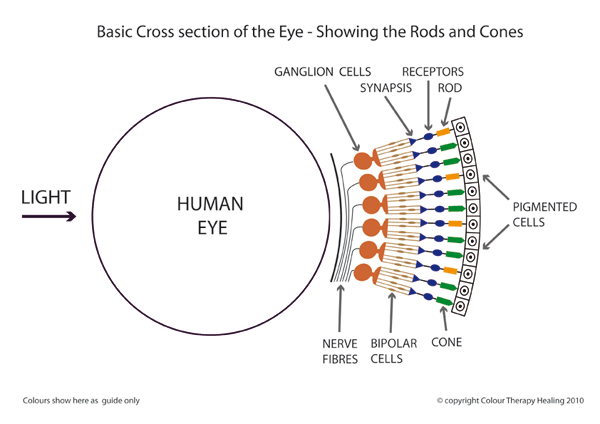Apples are red, leaves are green, the sky is blue…. these are some known facts. But have you ever wondered if the same apple could be seen as green by someone else but termed as red? Research suggests, the colours you see, could be different from what others see!
How we perceive colour
Let’s begin with first understanding how we perceive colours. Later lets understand what in this process leads us to seeing colours differently.
When you look at an object, the light-sensitive retina at the back of the eye captures the wavelengths reflected off the object. The wavelengths determine the colours that we see. The light sensitive retina is comprised of tiny cells known as cones. Cones are a type of photoreceptor cells. Most humans have 3 types of photoreceptors, these help us to perceive red, green and blue wavelengths. The light receptors then transmit this information to the brain, which produces the sensation of colour.

Factors Impacting Colour Perception
Light is the most important factor; perception of colour is impacted based under the type of light we view it in. Colours are seen differently under sunlight and incandescent light respectively. The colours in the surroundings of the subject we focus also impact how we see the colours of the subject. For example, the grey boxes within the boxes appear to be of the same colour, however when viewed independently, we can see their distinctive colours.

Another interesting factor that largely impacts colour perception is our mood, yes our mood! It definitely does not change the colours that we see but definitely impacts the perception of the hue of the colour. A study showed that sadness impairs our ability to accurately identify colours on the blue yellow spectrum. Furthermore, the neurotransmitter dopamine, which is the ‘happy’, ‘feel-good’ hormone, is also said to be linked with colour perception on the blue-yellow axis. We will later in this blog have a more detailed discussion on the implications of mood on perception of colours and vice versa.
Are we all seeing the same colours?
As mentioned earlier, we all have three photoreceptors, however, colourblind individuals are missing one or more of these receptors. Furthermore, there is another group of people- tetrachromats, who have a fourth receptor. The additional receptor enables them to see 9 million more colour than humans in general. This condition is only found among 1 in 225 females.
It is a well- established fact that the aforementioned groups perceive colour distinctively. However, more contemporary research has also indicated that it is possible that one persons red can be another persons blue.
An experiment was conducted on monkeys. Monkeys have only two colour sensitive cones. This enables them to only perceive colours on the blue and green axis. On being infected by a virus, they were conferred with blue, green and red cones. Soon after, they were able to make sense of the new information received. This was surprising because their brains were not wired to respond to signals from red cones.

The monkeys learned to respond to messages from the red cones in place of green cones. They also perceived a new colour; however the colour being unknown. This brought researchers to the conclusion that there are no predetermined preceptors ascribed each wavelength. This means neurons are not configured to respond to colours in a default manner. This therefore makes the perception of colours private and personal.
Psychology suggests that colour impacts emotions. One might think that since we perceive colour differently; the same colour may have a different impact on us. However, it is not the perception of colours that impact universal emotional response. The light-sensitive retina that captures wavelengths and sends the brain signals is responsible for the impact on our emotions.
Also, read about our previous blog Mangoes- the king of all fruits! But Why?
Subscribe to Engage Learning and improve the way your child learns.
